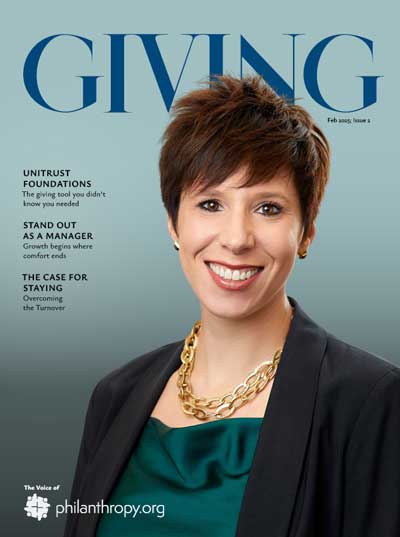… And They Used to Lie About Their Age
Humor. Sort Of. [Originally written in 2009, updated for 2025’s actuarial reality.]
With markets wobbling like a toddler in roller skates and portfolios plunging, some CFOs and fundraisers are asking: “Should we still be in the gift annuity business?”
After all, charitable gift annuities (CGAs) are ironclad contracts. They guarantee fixed payments to donors based on investment returns and mortality rates—two things that haven’t exactly been behaving lately. Meanwhile, people are living longer (thank you, kale), and markets aren’t playing nice.
So, should you panic and pull the plug on your CGA program? Absolutely not. That would be like canceling your insurance policy the moment you need it.
The ACGA Is Smarter Than You Think
The American Council on Gift Annuities (ACGA) designs its suggested rates with built-in safety nets. Their math ensures that, on average, a charity will keep at least 50% of the donated principal after the annuity ends. A $100,000 annuity could still yield $50,000+ for your mission—even if the donor lives to 112 and insists on wearing a Fitbit to meetings.
How do they do it? Through five—well, now three—genius assumptions that are as quirky as they are protective. Let’s explore.
1. All Annuitants Are… Mostly Women
Not entirely true anymore. The ACGA now assumes a 45-55 blend of male and female mortality rates based on the 2012 IAR mortality table. In other words, they acknowledge that men do occasionally fund CGAs, but they’re still betting that women write more checks (and live longer).
So if a man signs up, he’s still somewhat over-insured by the actuarial tables, just not as dramatically as before. The charity still wins by default (partial offense, fellas).
2. Everyone Used to Lie About Their Age
Pour one out for this delightful assumption. The ACGA no longer explicitly assumes donors knock two years off their age. Perhaps they’ve decided that in the age of digital records, fibbing about birthdays isn’t as common.
But they are using a mortality table from 2012, which shows people dying earlier than more recent tables would suggest. So in a way, they’re still assuming we’re all a bit younger than reality might indicate. Who says actuaries can’t be nostalgic?
3. Investments Will Definitely Not Keep Up With Inflation
No pressure to hire the next Warren Buffett. The ACGA now assumes your nonprofit will earn a net return of 4.75% (5.75% minus 1% expenses)—an even more conservative target than before and nowhere near keeping pace with Biden-era inflation.
In other words, they assume you’ll play it extra safe, absolutely avoid crypto, and stick with the most boring index fund you can find. You don’t need to beat the market—just meet the assumptions and pray inflation doesn’t eat your lunch.
4. Donors Get Less Than Commercial Annuities—and That’s Still the Point
Unlike commercial annuities, CGAs provide income based only on the “investment in the contract”—roughly half the original gift. The rest is tax-deductible for the donor and ultimately supports your mission.
Think of CGAs as the mullet of financial planning: business in the front (income), party in the back (charitable impact). Everyone wins—just not with a Wall Street payout. Some things never change.
5. The Oldest and Youngest Annuitants Still Get the Short End
Some charities try to limit CGAs to donors aged 70–85. Ironically, ACGA rates already adjust to protect the charity from very old or very young annuitants.
Case in point: A 100-year-old once funded a CGA for my organization. Her expected lifespan? 2.6 years. But she received the 90-year-old rate (4.9 years). The result? We paid her income for a bit, and she passed. Her estate promised us something in a will—but nothing arrived.
Lesson? A bird in the hand is better than a promise in probate court. Even if the bird is 100 and demands a 9.5% payout.
What About “Young” Annuitants?
Let’s say a 60-year-old sets up a CGA at 5.2%. If your charity earns just 4.75% on investments, you might sweat a little more than before—but the math still works out if they don’t live to be 110. Longevity risk, meet increasingly conservative math.
Consistency Beats Market Timing
Some organizations panic during market dips and pause their CGA programs. Others go full-throttle before a rate cut. Both moves are risky.
Stopping your program means fewer annuities to average out risk (which defeats the entire actuarial approach). Rushing in before a rate drop attracts opportunistic donors, not long-term supporters.
Want to lose money? Write a bunch of CGAs between a rate-change announcement and your adoption of the new rates. Timing the market rarely works—especially when it’s your donors’ lifespans you’re trying to predict.
In Conclusion: Humor Meets Hard Truth (With Updated Actuarial Tables)
Yes, CGAs come with risks. Some annuities will underperform. Some donors will live forever. But the ACGA’s assumptions—mostly women, outdated mortality tables, even safer investments—give your program the best chance of long-term success.
Keep issuing contracts. Keep marketing. Keep building relationships. Because if you stop during tough times, you’ll lose both momentum and protection.
Get the CGA Toolkit and make your program airtight (with or without 100-year-olds claiming to be 98).



